Evaluation of Drifting Snow Susceptibility Based on GIS and GA-BP Algorithms
Abstract
1. Introduction
2. Evaluation Model
2.1. Evidence Weight Method
2.2. Coupling Model
3. Overview of the Study Area and Data Sources
3.1. Overview of the Study Area
3.2. Data Source
- Terrain data
- 2.
- Wind field data
- 3.
- On-site snow depth data
4. Establishment of Evaluation Index System and Model Construction
4.1. Evaluation Index System
4.2. Index Factor Classification
4.2.1. Regional Environmental Conditions
- Elevation
- 2.
- Relief amplitude
- 3.
- Surface roughness
- 4.
- Aspect
4.2.2. Regional Snow Field Conditions
- Snowfall
- 2.
- Frequency of heavy snowfall
4.2.3. Regional Wind Field Conditions
- Wind speed
- 2.
- Angle between wind and line direction
- 3.
- Snow wind speed frequency
4.3. Analysis of the Construction of WOE Model Improved by GA-BP Algorithm
4.3.1. Weight of Evidence (WOE) Model
4.3.2. GA-BP Algorithm Optimisation
5. Drifting Snow Evaluation and Accuracy Analysis Susceptibility Evaluation
5.1. Susceptibility Evaluation
- The location of the high-susceptibility concentration area calculated by the three models is unchanged, and all of them are between DK57 km and DK116 km. After the BP neural network weight optimisation, the DK 230–DK 231+300 km susceptibility grade is improved, from low susceptibility area to medium susceptibility area. After the GA-BP model weight optimisation, the susceptibility level of DK23–DK33+400 km is improved, especially the DK32+400 km–DK33+400 km section is changed from a medium- to a high-prone area.
- The weight analysis results are consistent with the theoretical analysis. The factors that have a greater contribution to the drifting snow susceptibility are the angle between the wind and the line directions, the maximum wind speed, the amount of snowfall, and the frequency of snowfall.
- Compared with the WOE and WOE-BP models, the WOE-GA-BP model obtained a higher proportion of high-susceptibility areas in the susceptibility zoning map and included more drifting snow occurrence areas, which has more practical significance for guiding drifting snow protection areas.
5.2. Accuracy Evaluation
6. Conclusions
- Taking Afuzhun Railway in Xinjiang as the specific research object, the evaluation index system for drifting snow susceptibility on the railway can be established by selecting ten influencing factors, such as elevation, snowfall, the angle between the wind and the line directions. Using the DSSI proposed in this paper, the WOE model can be used to obtain the preliminary zoning of drifting snow susceptibility along the railway.
- Based on the initial classification of drifting snow susceptibility, 4000 grid cells were randomly selected as training samples, and the influence of each index on the weight of the evaluation results was calculated using the BP and GA-BP algorithms. The results showed that the weight of the angle between the wind and the line directions was the largest, followed by the largest wind speed and the frequency of heavy snowfall.
- The calculated weights were used to optimise the WOE model. The results showed that the evaluation accuracy of all models was improved. The GA-BP algorithm improved the evaluation accuracy by 5.1% to 0.785, achieving a high evaluation accuracy.
- The GA-BP algorithm can effectively study the complex nonlinear relationship between various indicators and obtain evaluation results that are highly consistent with the actual situation. This method can effectively find the high incidence area of drifting snow in linear railways and provide a theoretical basis for the effective prevention and control of drifting snow.
- In the relatively mature application fields for WOE, such as landslide susceptibility evaluation, the evaluation accuracy of this evaluation model can reach 0.8 or even higher. In comparison, the evaluation accuracy of this model for linear engineering (such as railway) is low. In the future application of this research, we will focus on optimising the evaluation model to improve the evaluation accuracy of the model.
- The evaluation accuracy of this method partly depends on the accuracy of data, especially the wind field data. This study is based on on-site monitoring and takes considerable time to collect data. Hence, further research is required to develop a more efficient and simple method to obtain field data.
Author Contributions
Funding
Data Availability Statement
Conflicts of Interest
References
- Wang, Z. Snowdrift and Treat Study in China; Lanzhou University Press: Lanzhou, China, 2001. [Google Scholar]
- Liu, H.; Lang, Y. Change trend and temporal-spatial distribution of snowdrift in China. Arid Zone Res. 2005, 22, 125–129. [Google Scholar]
- Baidu Baike. Snowdrift. Available online: https://baike.baidu.com/item/%E9%A3%8E%E5%90%B9%E9%9B%AA/66408?fr=aladdin[N/OL] (accessed on 4 February 2022).
- Bagnold, R.A. The Physics of Blown Sand and Desert Dunes; Methuen: London, UK, 1941. [Google Scholar]
- Zhang, Z. Regionalization of snow drift in China. JMS 1999, 17, 312–317. [Google Scholar]
- Liu, H.; Wang, J.; Hu, X. Influence of blowing snow on snow mass and energy exchanges in the Qilian mountainous. J. Glacio. Geocryol. 2012, 34, 1084–1090. [Google Scholar]
- Li, Y.L.; Zhao, T.; Liu, D.T.; Liao, H.L. Aerodynamic ambient flow around railway wind screens and features of drifting snow. J. China Railw. Soc. 2015, 37, 119–125. [Google Scholar]
- Gao, W.D.; Liu, M.Z.; Wei, W.S.; Xu, G. The occurrence and mitigation of drifting snow and avalanche hazard in the mountains along the Jinghe-Yining railway, Tianshan, China. JMS 2005, 23, 43–52. [Google Scholar]
- Wang, X.-Y. Analysis of flow field of snow drifting disaster to embankment. J. Railw. Eng. 2009, 8, 42–47. [Google Scholar]
- Zhu, D.; Qin, Y. Research on subgrade settlement monitoring and its deformation character in Gobi desert. Railw. Eng. Int. 2017, 14, 942–949. [Google Scholar]
- Liang, S.; Huo, Z.; Niu, Y. Assessment of snow drifting hazard along railway a case study of JYH railway in Xinjiang, China. In Proceedings of the 2009 International Conference on Environmental Science and Information Application Technology, ESIAT 2009, Wuhan, China, 4–5 July 2009; Volume 1, pp. 44–47. [Google Scholar]
- Zhang, H.; Hu, J.; She, X.; Li, Z.; Yang, P. Research on compaction characteristics and compaction process of aeolian sand for a highway in desert. Railw. Eng. Int. 2015, 12, 806–811. [Google Scholar]
- China News. Britain Experienced Its Coldest Spring for 25 Years, Snowstorms Sweep across the Country [N/OL]. Available online: http://www.chinanew-s.com/gj/2013/03-12/4636923.shtml (accessed on 12 March 2021).
- Fifteen Carriages of Train 1817 Were Buried by Heavy Snow, Trapping Thousands of Passengers [N/OL]. Available online: https://china.huanqiu.com/article/9CaKrnJmQrK (accessed on 14 January 2022).
- China News. U.S. Hits Worst Snowstorm in History, States Declare Emergency [N/OL]. Available online: http://www.chinane-ws.com/gj/2013/02-10/4561050.shtml.Global (accessed on 10 February 2022).
- Finney, E.A. Snow control by tree planting. In Highway Research Board Proceedings; National Research Council (USA), Highway Research Board: Washington, DC, USA, 1936; Volume 16. [Google Scholar]
- Uematsu, T.; Nakata, T.; Takeuchi, K.; Arisawa, Y.; Kaneda, Y. Three-dimensional numerical simulation of snowdrift. Cold Reg. Sci. Technol. 1991, 20, 65–73. [Google Scholar] [CrossRef]
- Ying, C. Research on the Countermeasures of the Blowing Snow Hazards on Highways; Jilin University: Changchun, China, 2007. [Google Scholar]
- Budd, W.F.; Dingle, W.R.J.; Radok, U. The Byrd Snowdrift Project: Outline and basic results, Studies in Antarctic Meteorology. Antarct. Res. Ser. 1966, 9, 71–134. [Google Scholar]
- Kikuchi, T. A wind tunnel study of the aerodynamic roughness associated with drifting snow. Cold Reg. Sci. Technol. 1981, 5, 107–118. [Google Scholar] [CrossRef]
- Hao, Y.; Hu, C.; Wei, J.; Zhang, J.; Dai, G. Research on the Mechanism of Snow Wall. J. Traffic Transp. Eng. 2006, 4, 37–38. [Google Scholar]
- Tomabechi, T.; Yamagata, T.; Takahashi, A. fundamental study on the snow damage in Hokkaido: Analysis of snow damages from the planning of a region development and construction point of view. Trans. AIJ 1993, 447, 6–68. [Google Scholar]
- Feng, X.; Lu, A.; Zeng, Q. Study on snow disater monitoying and assessment using remote sensing in the main pastoral areas of China. J. Remote Sens. 1997, 1, 129–134. [Google Scholar]
- Valinger, E.; Fridman, J. Models to assess the risk of snow and wind damage in pine, spruce, and birch forests in sweden. J. Environ. Manag. 1999, 24, 209–217. [Google Scholar] [CrossRef]
- Jamieson, B.; Stethem, C. Snow avalanche hazards and management in Canada: Challenges and progress. Nat. Hazards 2002, 26, 35–53. [Google Scholar] [CrossRef]
- Li, S.; Feng, X.; Zuo, W. Research on fuzzy comprehensive evaluation for regional dangerous degree of snow disaster in Nagqu of Tibet. J. Nat. Disaster Sci. 2001, 10, 86–91. [Google Scholar]
- Liang, T.; Gao, X.; Liu, X. Snow disaster in Aletai Region—Its remote sensing monitoring model and evaluation method. Chin. J. Appl. Ecol. 2004, 15, 2272–2276. [Google Scholar]
- Liu, X.; Chen, Q.; Liang, T.; Guo, Z.; Chai, Q. Establishment of snow disaster remote sensing monitoring and damage estimation systems in Altai pastoral region of Xinjiang. Chin. J. Appl. Ecol. 2006, 17, 215–220. [Google Scholar]
- Dong, F. A Study on Disaster Assessment and Grade Classification of Grassland Snow Disaster in Xilinguole League of Inner Mongolia; Northeast Normal University: Changchun, China, 2008. [Google Scholar]
- Fu, Y.; Xiao, J.; Xiao, R.; Sa, W.; Li, F.; Zhao, H. Risk assessment model of snow disaster in Qinghai Province Based on Gis. Trans. CSAE 2010, 26 (Supp. 1), 197–205. [Google Scholar]
- Shi, P.; Chen, J. Study on monitoring snow disaster in large areas supported by GIS and RS. Acta Geogr. Sin. 1996, 51, 296–305. [Google Scholar]
- Li, T.; Sun, Y.; Chen, X.; Yu, H. Hazard assessment of snow disaster in Hebei province based on GIS. Henan Sci. 2018, 36, 1099–1104. [Google Scholar]
- Wang, X.; Lu, X.; Ma, Y.; Wang, X. Study on snow disaster assessment method and snow disaster regionalization in Xinjiang. J. Glaciol. Geocryol. 2019, 41, 836–844. [Google Scholar]
- Liu, Y.; Cao, L.; Bai, X. Influence of disaster weather on traffic safety of freeway in Heilongjiang Province and detailed defense measures. J. Nat. Disaster Sci. 2019, 28, 114–118. [Google Scholar]
- Wu, W.; Qi, Q.; Fan, Y.; Yang, S. Review on snow disaster assessment in China. J. Catastrophol. 2013, 28, 152–158. [Google Scholar]
- Sui, Q.; Wang, Y.; Li, T.; Liu, Q.; Yu, H. Application of multi-source information fusion in the traffic risk assessment of snow disaster. Geogr. Inf. Sci. 2018, 20, 1571–1578. [Google Scholar]
- Berrocal, V.J.; Raftery, A.E.; Gneiting, T.; Steed, R.C. Probabilistic weather forecasting for winter roadmaintenance. J. Am. Stat. Assoc. 2010, 105, 522–537. [Google Scholar] [CrossRef]
- Jiang, X.; Jiang, L.; Zhao, G. Hydromechanical mechanism of road snowdrift deposit and its depth model. Jilin Daxue Xuebao (Gongxueban)/J. Jilin Univ. 2006, 36, 152–156. [Google Scholar]
- Liu, Q.; Tang, A. Research on highway system disaster risk based on probability analysis. Xinan Jiaotong Daxue Xuebao/J. Southwest Jiaotong Univ. 2020. Network debut. [Google Scholar]
- Wu, P.; Chen, F.; Liu, J.; Ma, L.; Liu, L.; Hu, Z. Assessment and forecast of drift on the hazard degress on the highways based on the fuzzy comprehensive assessment method. J. Saf. Environ. 2017, 17, 2273–2276. [Google Scholar]
- Fan, Q.; Ju, N.; Xiang, X.; Hua, J. Landslides hazards assessment with weights of evidence—A case study in Guizhou, China. J. Eng. Geol. 2014, 22, 474–481. [Google Scholar]
- Bonham-Carter, G.F.; Agterberg, F.P.; Wright, D.F. Integration of geological datasets for gold exploration in Nova Scotia. ASPRS 1988, 54, 1585–1592. [Google Scholar]
- Agterberg, F.P.; Bonham-Carter, G.F.; Cheng, Q.M.; Wright, D.F. Weights of evidence modelling and weighted logistic regression for mineral potential mapping. Comput. Geol. 1993, 25, 13–32. [Google Scholar]
- Xu, C.; Dai, F.C.; Xu, X.W. Earthquake Triggered landslide susceptibility evaluation based on GIS platform and weight-of-evidence modeling. Earth Sci.—J. China Univ. Geosci. 2011, 36, 1155–1164. [Google Scholar]
- Xia, C.; Zhou, K.; Cheng, Y.; Xu, D. Prediction modeal of smowdrift on highway based on BP neural newwork. J. Tongji Univ. Nat. Sci. 2017, 45, 714–721. [Google Scholar]
- Liu, Y.L.; Yin, K.L.; Liu, B. Application of logistic regression and artificial neural network model in spatial assessment of landslide hazards. J. Eng. Geol. Hydrogeol. 2010, 37, 92–96. [Google Scholar]
- Cheng, C.-B.; Lee, E.S. Applying Fuzzy Adaptive Network to Fuzzy Regression Analysis. Comput. Math. Appl. 1999, 38, 123–140. [Google Scholar] [CrossRef][Green Version]
- Zhou, W.Y. Verification of the nonparametric characteristics of back propagation neural networks for image classification. IEEE Trans. Geosci. Remote Sens. 1999, 37, 771–779. [Google Scholar] [CrossRef]
- Zhu, C.; Zhang, J.; Liu, Y.; Ma, D.; Li, M.; Xiang, B. Comparison of GA-BP and PSO-BP neural network models with initial BP model for rainfall-induced landslides risk assessment in regional scale: A case study in Sichuan, China. Nat. Hazards 2020, 100, 173–204. [Google Scholar] [CrossRef]
- Huang, R.Q. Large-scale landslides and their sliding mechanisms in China since the 20th century. Chin. J. Rock Mech. Eng. 2007, 26, 433–454. [Google Scholar]
- Yalcin, A.; Reis, S.; Aydinoglu, A.C.; Yomralioglu, T. A GIS-based comparative study of frequency ratio, analytical hierarchy process, bivariate statistics and logistics regression methods for landslide susceptibility mapping in Trabzon, NE Turkey. Catena 2011, 85, 274–287. [Google Scholar] [CrossRef]
- Sheng, Y.; Ma, W.; Wen, Z.; Zhang, M. Analysis of difference in thermal state between south faced slope and north faced slope of railway embankmentin in permafrost region. Chin. J. Rock Mech. Eng. 2005, 24, 3197–3201. [Google Scholar]
- Liu, B.; Wu, X. Research on disaster risk of severe snowfall in Altay region. Desert Oasis Meteorol. 2016, 10, 47–52. [Google Scholar]
- Wang, Z. Research on Chinese Wind and Snow Current and Its Prevention; Lanzhou University Press: Lanzhou, China, 2001. [Google Scholar]
- Pradhan, B.; Lee, S. Landslide susceptibility assessment and factor effect analysis: Backpropagation artificial neural networks and their comparison with frequency ratio and bivariate logistic regression modelling. Environ. Model. Softw. 2010, 25, 747–759. [Google Scholar] [CrossRef]
- Nefeslioglu, H.A.; Gokceoglu, C.; Sonmez, H. An assessment on the use of logistic regression and artificial neural networks with different sampling strategies for the preparation of landslide susceptibility maps. Eng. Geol. 2008, 97, 171–191. [Google Scholar] [CrossRef]
- Kanungo, D.P.; Arora, M.K.; Sarkar, S.; Gupta, R.P. A comparative study of conventional, ANN black box, fuzzy and combined neural and fuzzy weighting procedures for landslide susceptibility zonation in Darjeeling Himalayas. Eng. Geol. 2006, 85, 347–366. [Google Scholar] [CrossRef]
- Lawrence, J.; Fredrickson, J. Brainmaker User’s Guide and Reference Manual; California Scientific Software: Nevada City, CA, USA, 1998. [Google Scholar]
- Widrow, B. Adaline and Madaline—1963. In Proceedings of the IEEE 1st International Conference on Neural Networks, San Diego, CA, USA, 21–24 June 1987. [Google Scholar]
- Baum, E.B.; Haussler, D. What size net gives valid generalization? Neural Comput. 1989, 1, 151–160. [Google Scholar] [CrossRef]
- Fawcett, T. An introduction to ROC analysis. Pattern Recognit. Lett. 2006, 27, 861–874. [Google Scholar] [CrossRef]
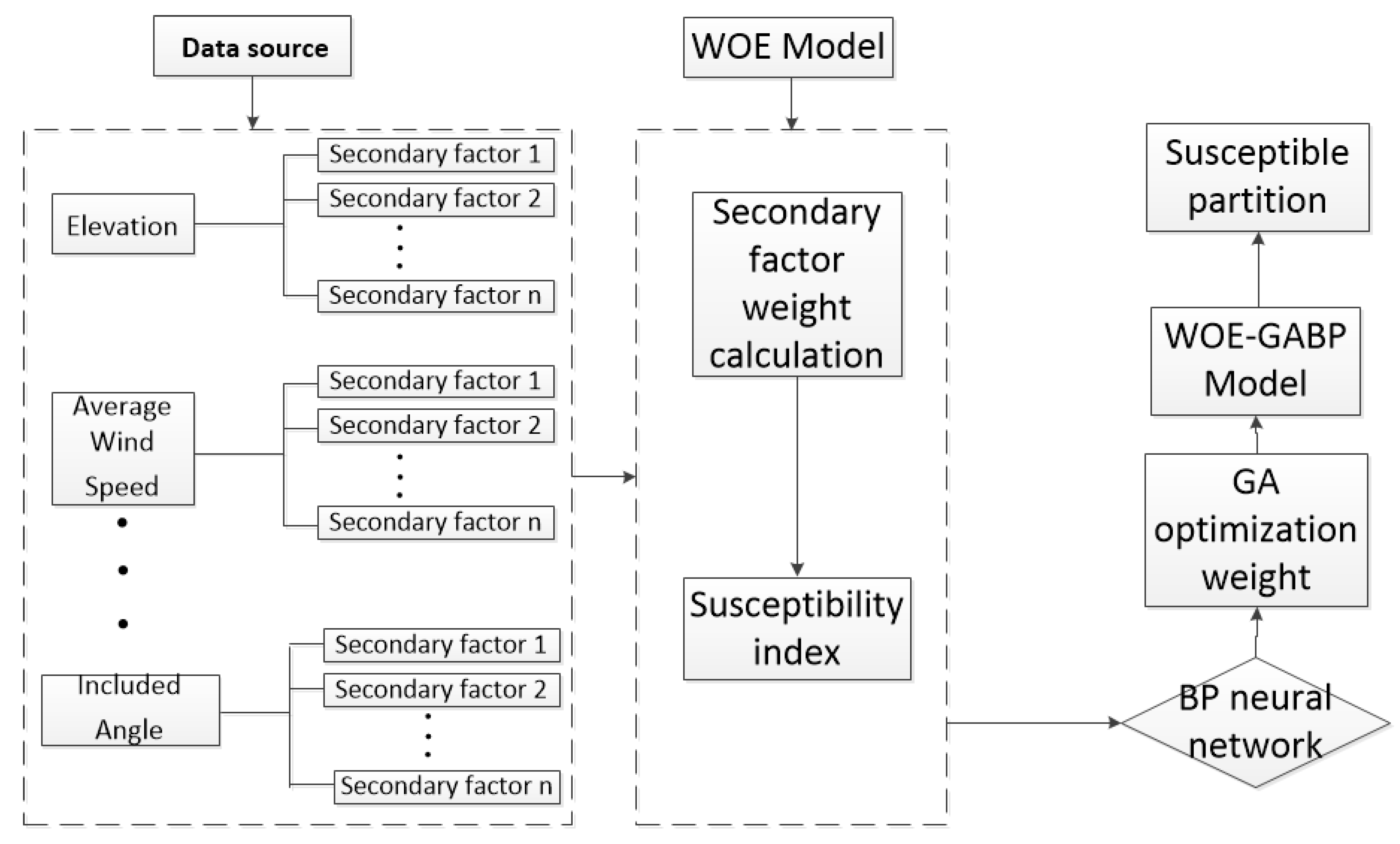


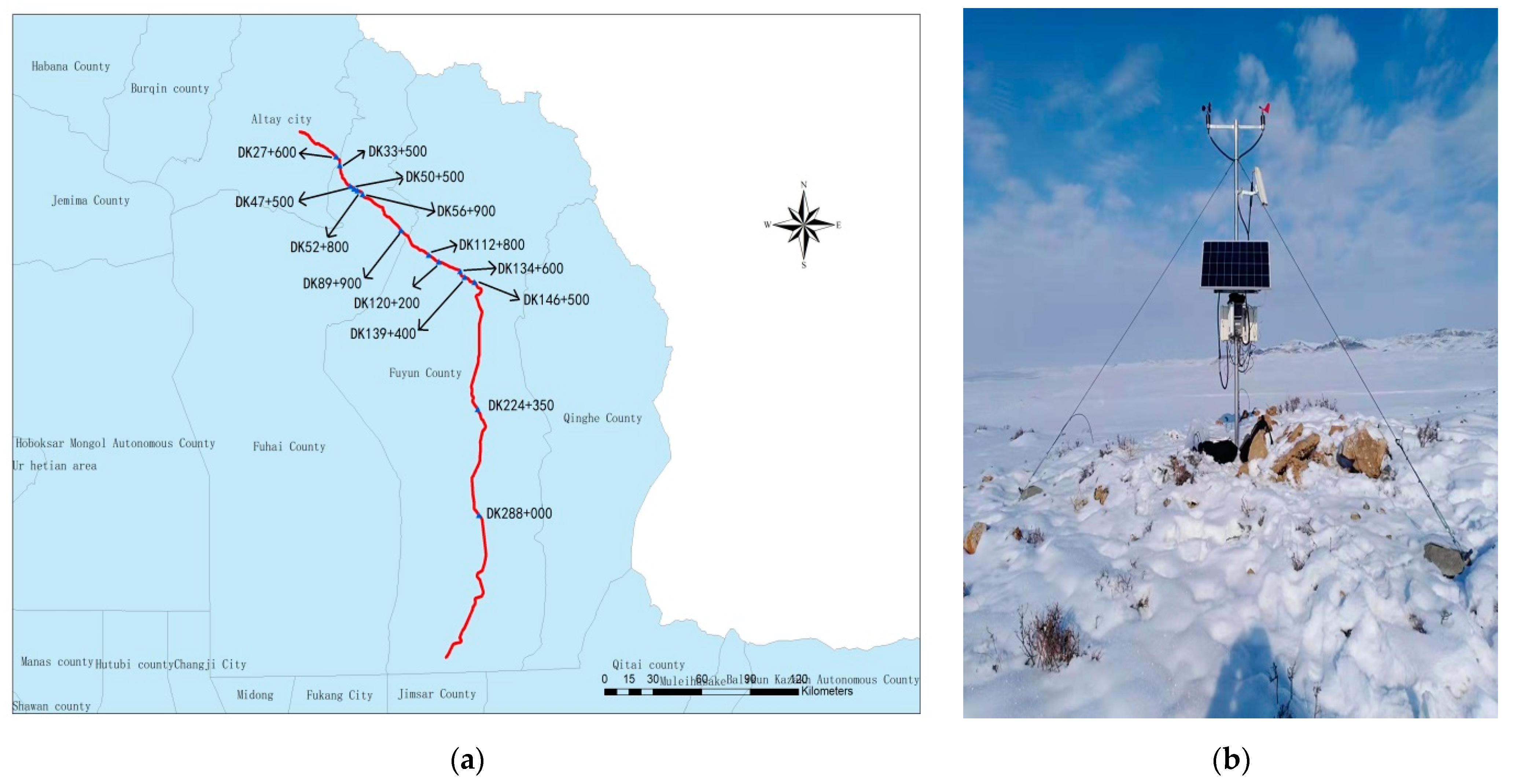
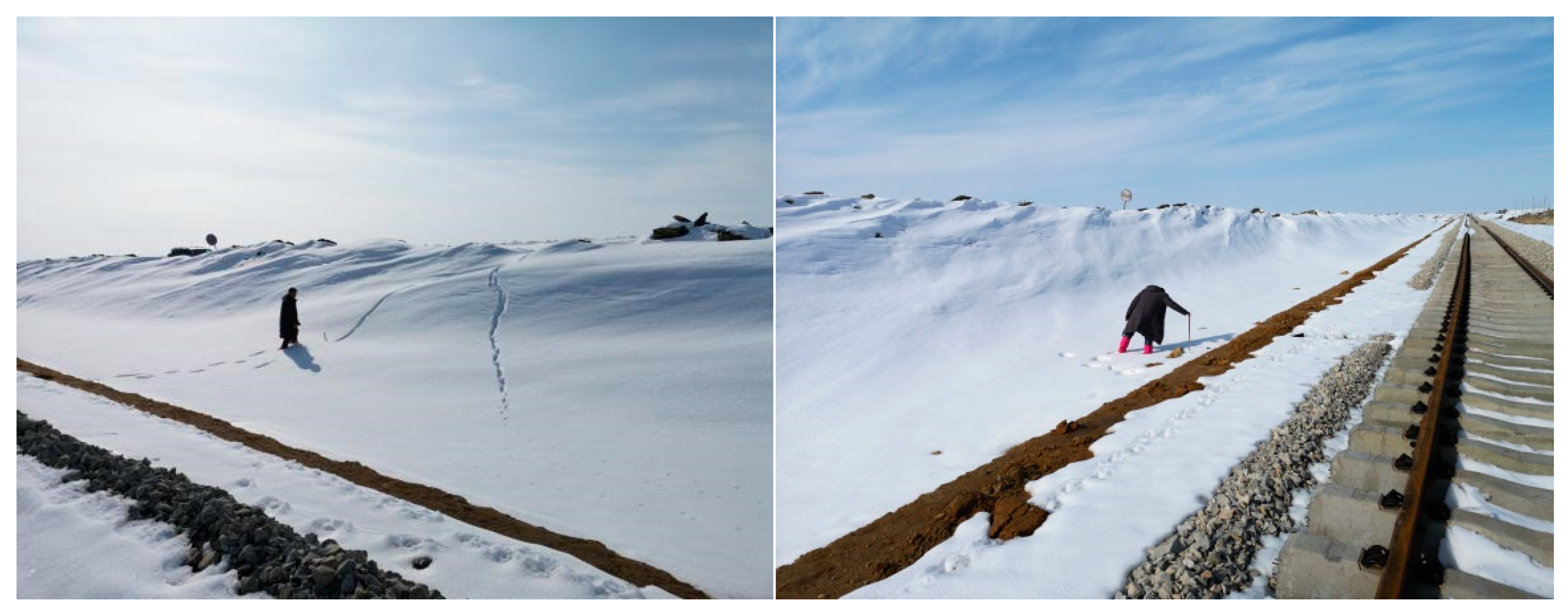

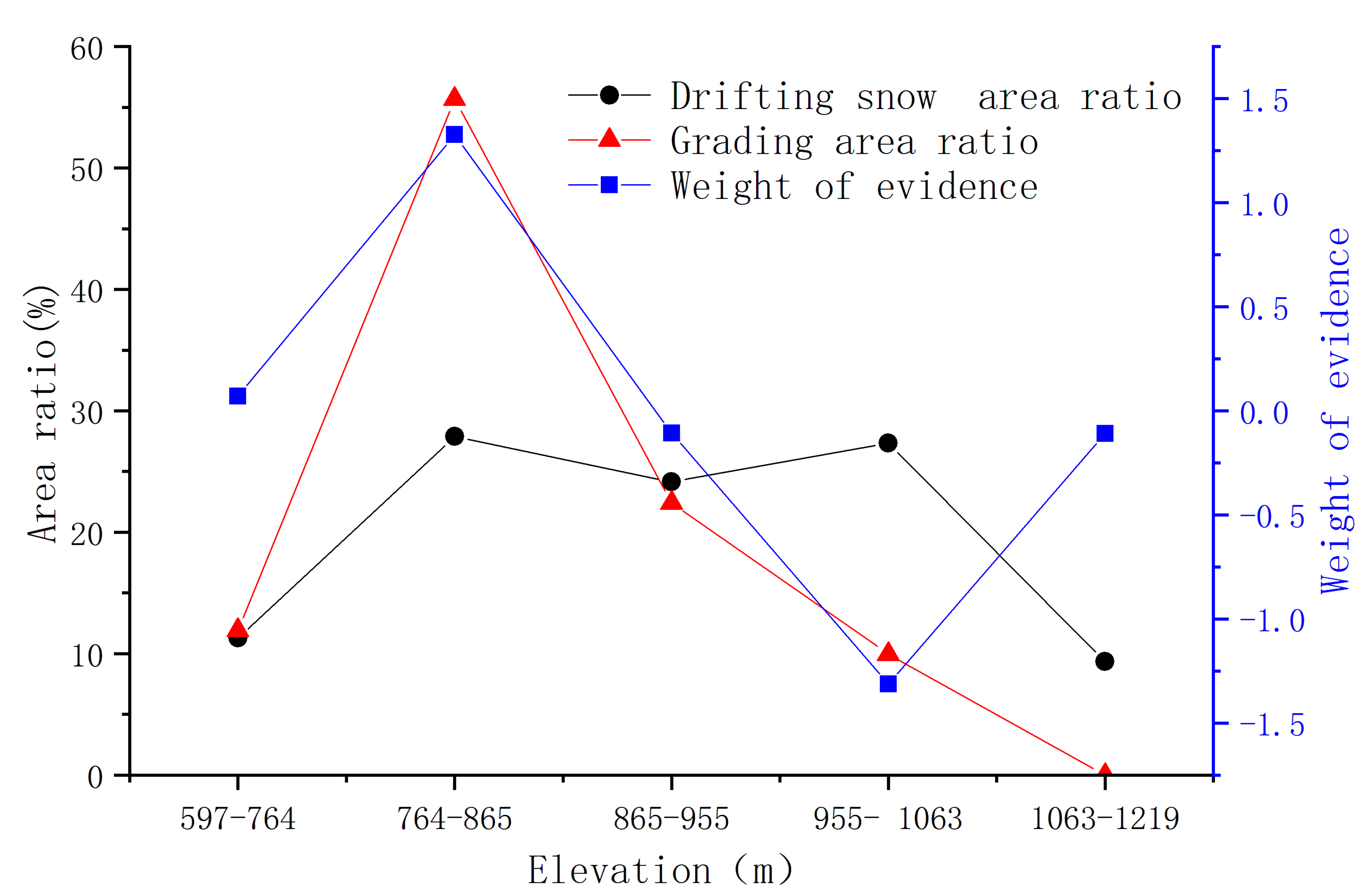
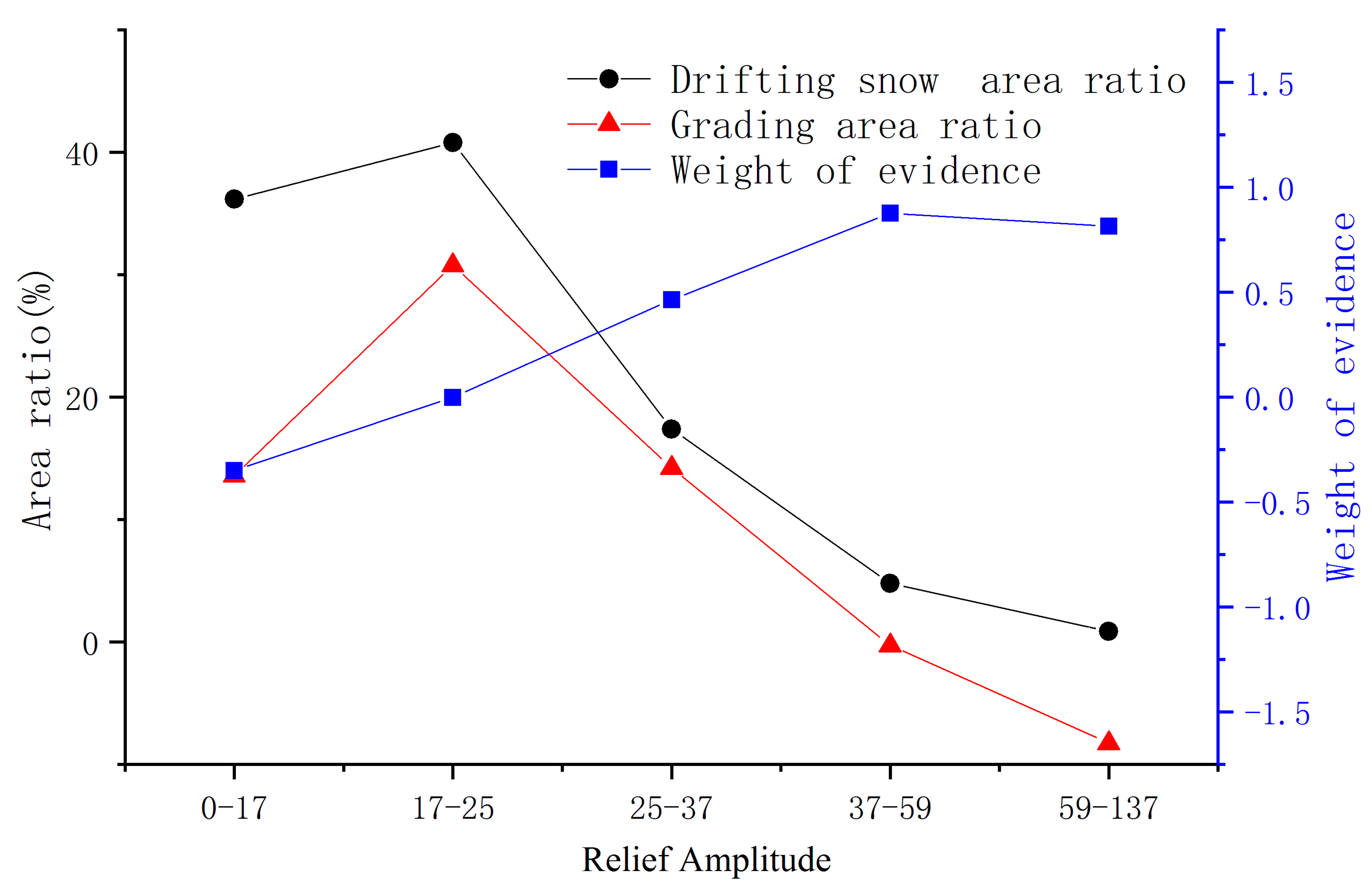
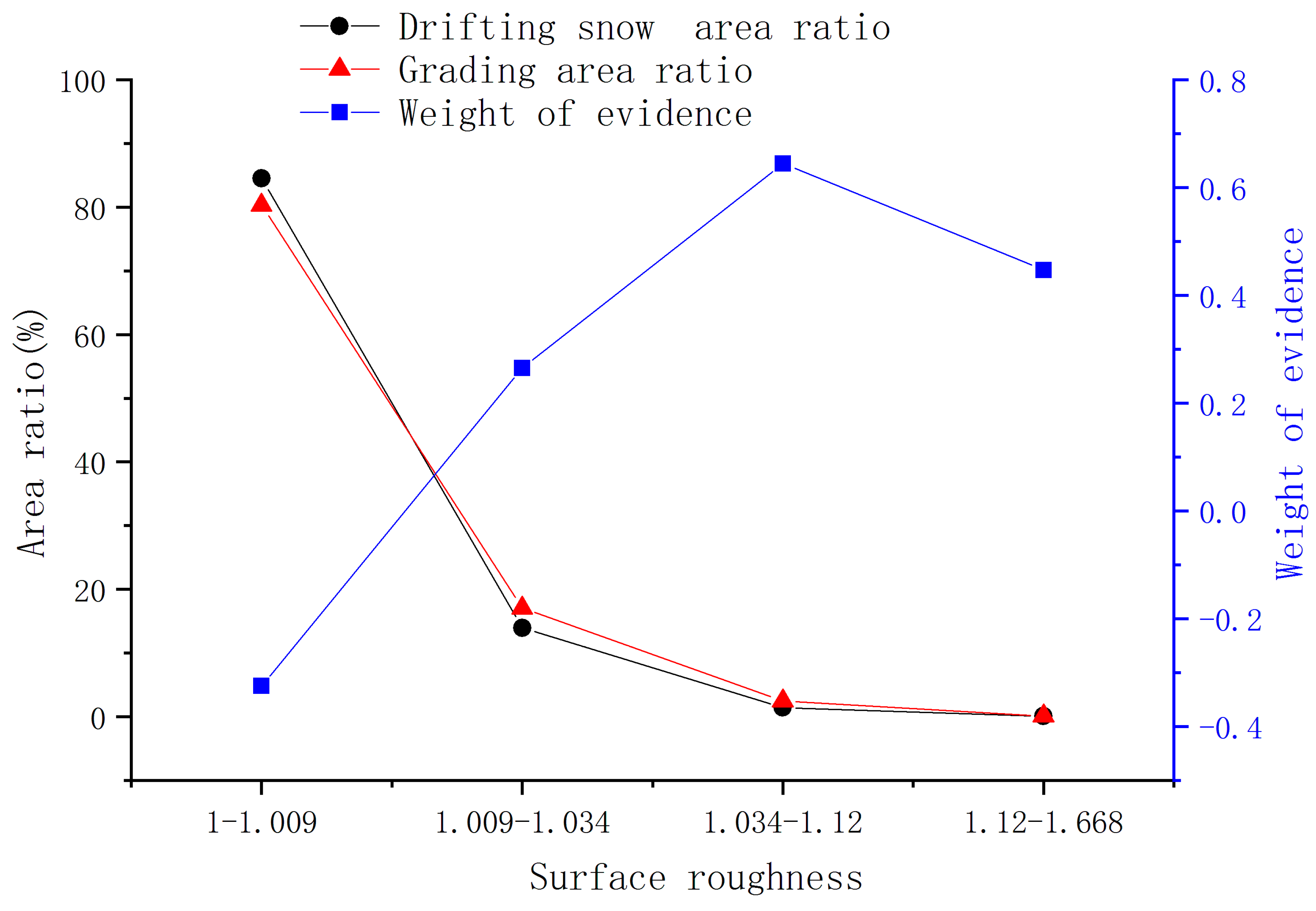
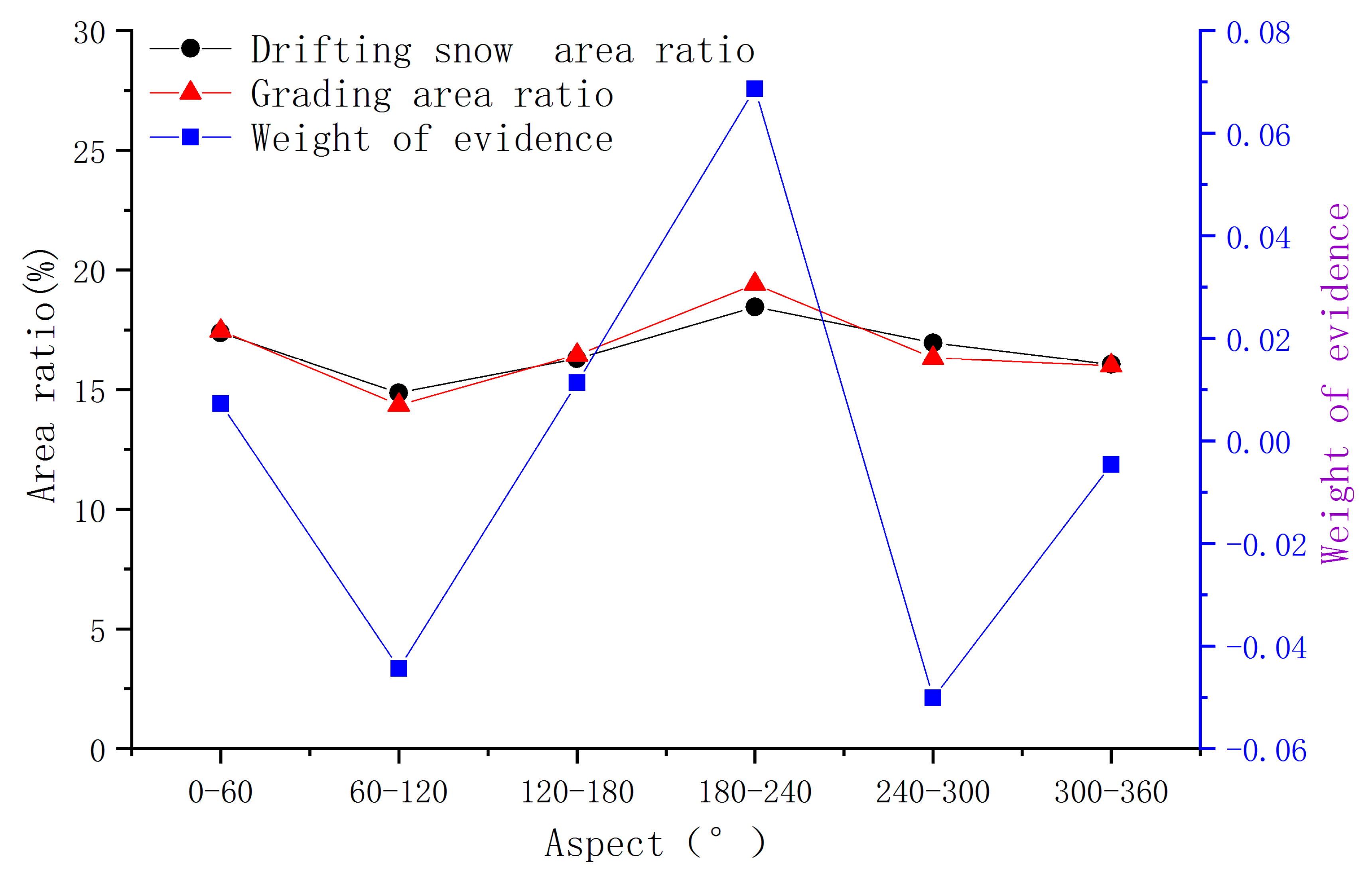


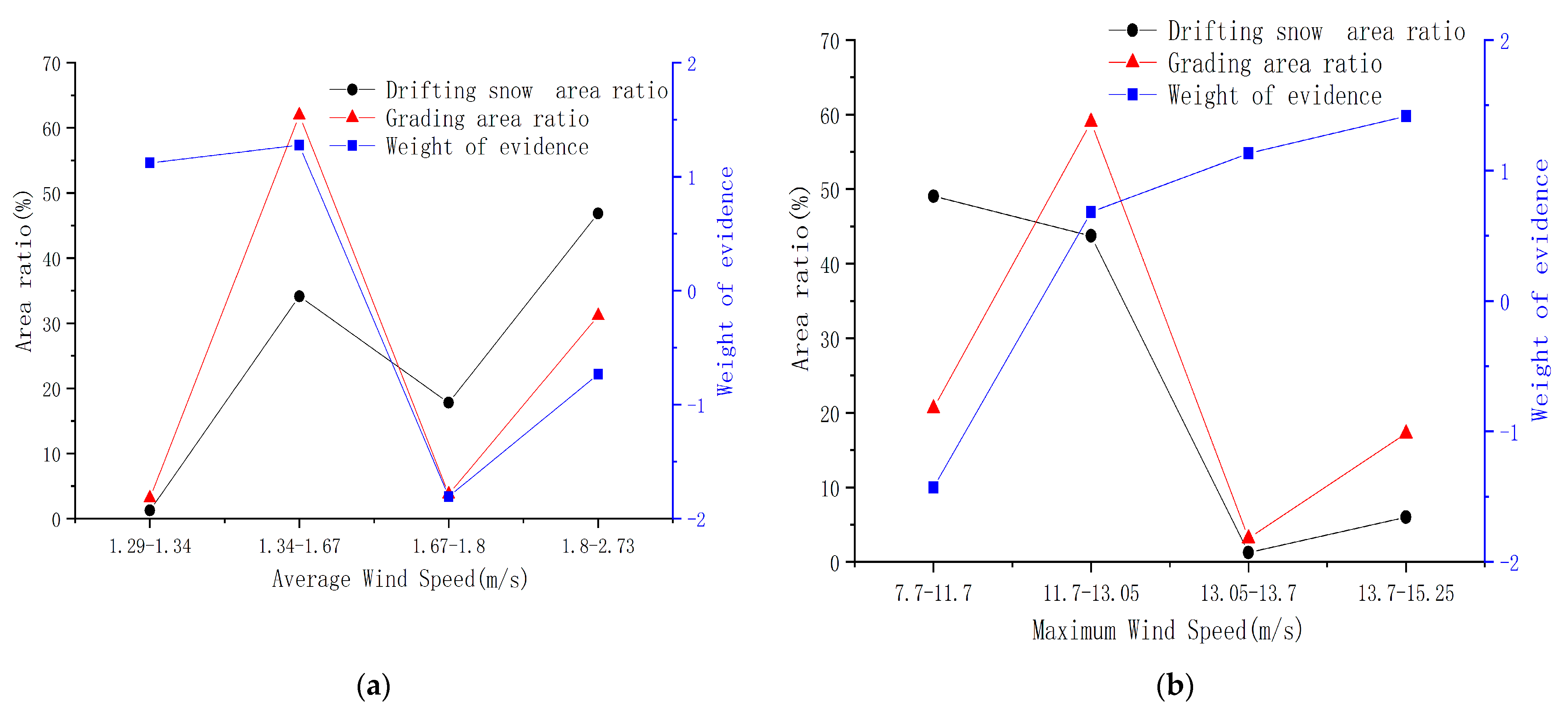

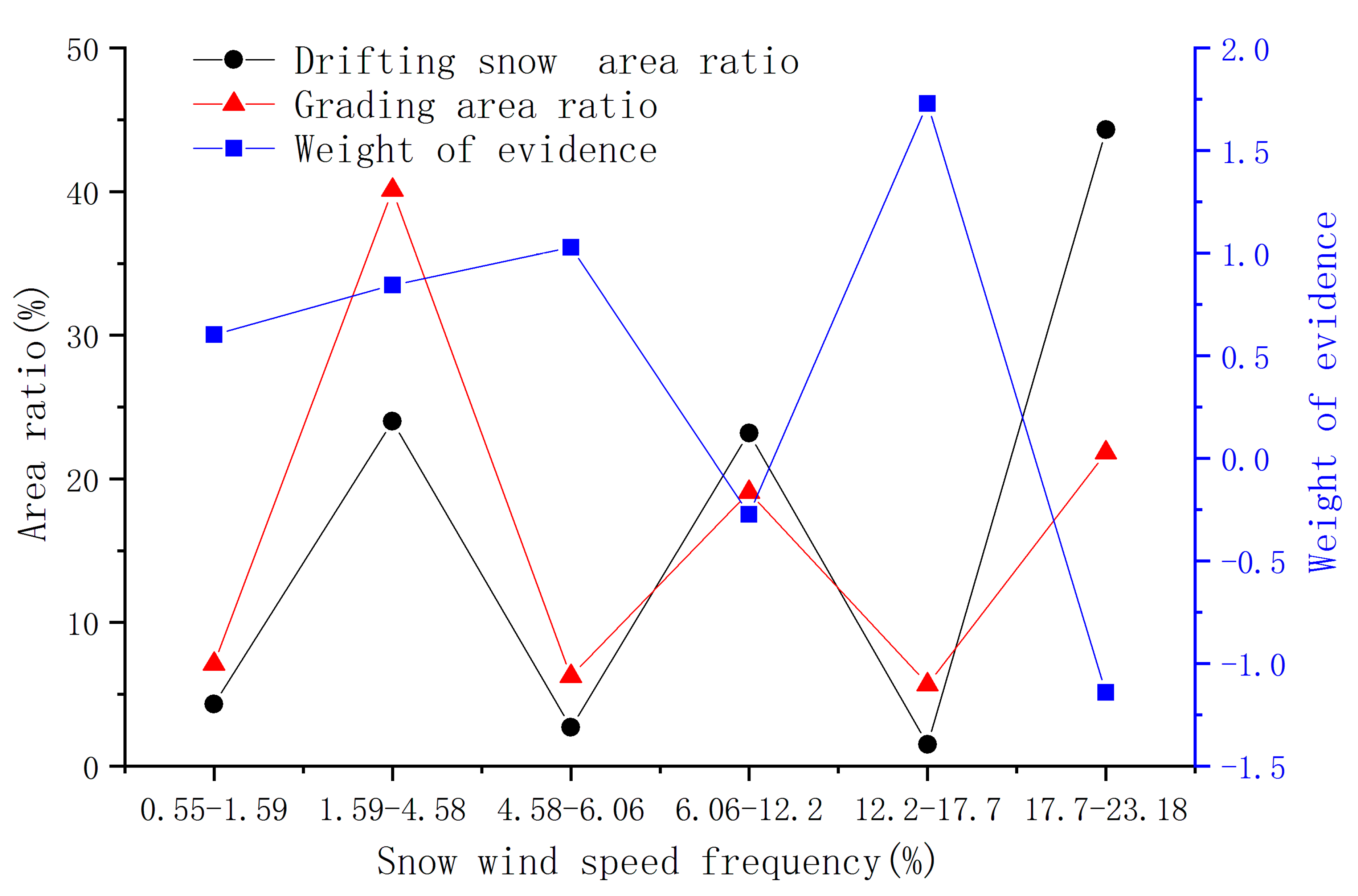
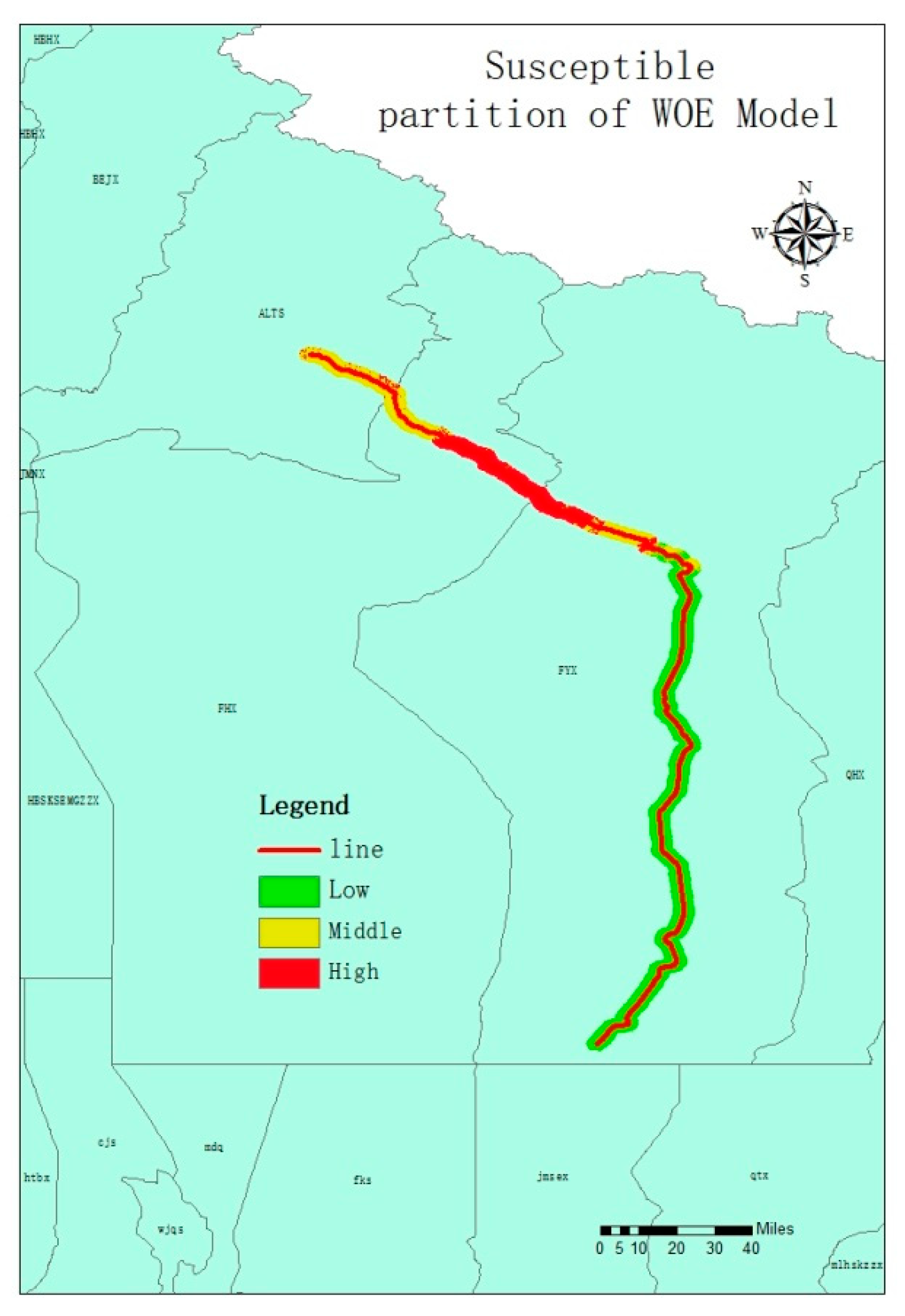


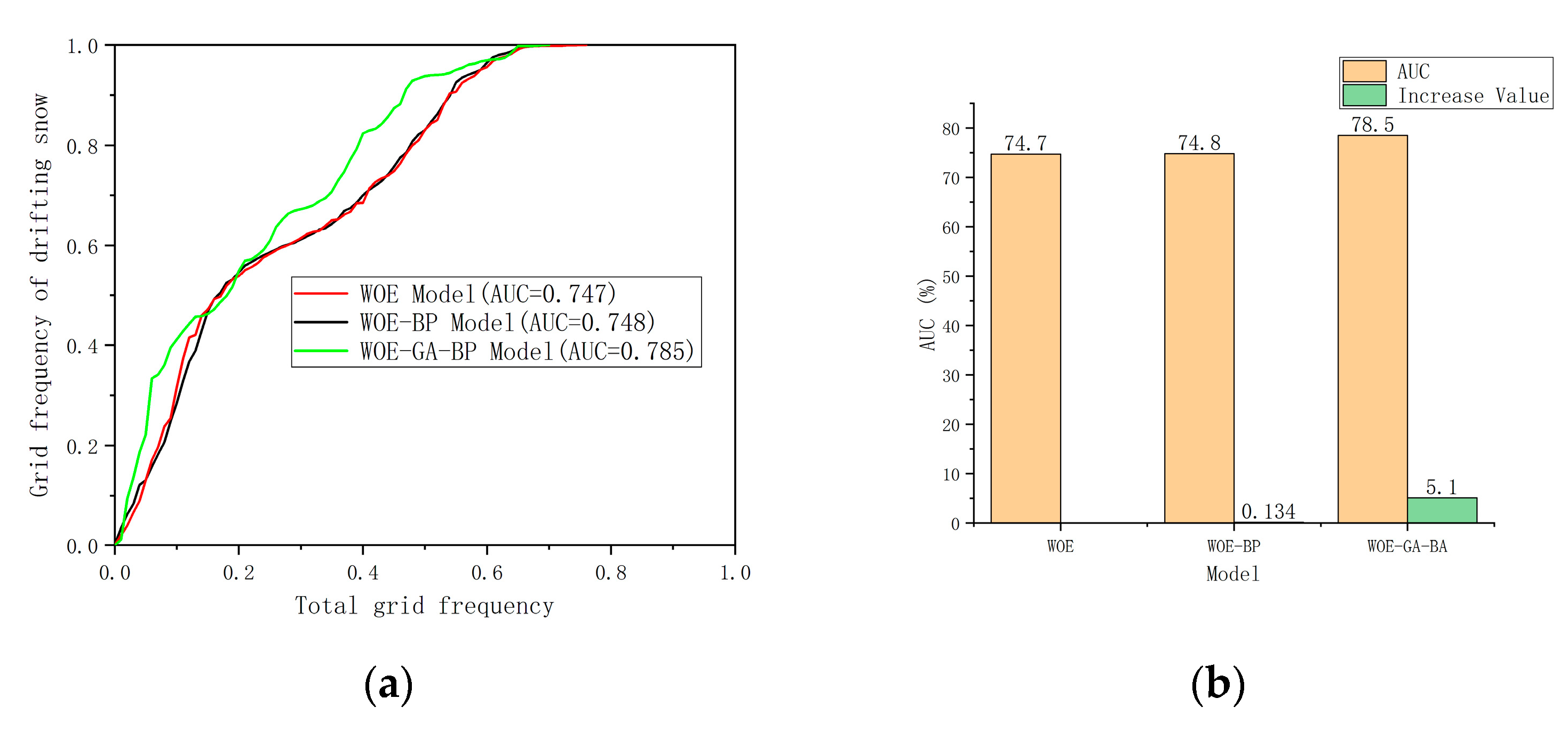
| Monitoring Mileage | Average Wind Speed (m/s) | Maximum Wind Speed (m/s) | Monitoring Mileage | Average Wind Speed (m/s) | Maximum Wind Speed (m/s) |
|---|---|---|---|---|---|
| DK89+900 | 1.5 | 14.1 | DK89+900 | 1.76 | 12.5 |
| DK112+800 | 1.45 | 7.8 | DK112+800 | 1.23 | 15.6 |
| DK120+200 | 1.68 | 12.8 | DK120+200 | 1.65 | 13.7 |
| DK129+300 | 1.79 | 11.8 | DK129+300 | 1.32 | 13 |
| DK134+600 | 2.89 | 13.4 | DK134+600 | 1.45 | 14 |
| DK139+400 | 1.32 | 10.6 | DK139+400 | 1.26 | 19.9 |
| DK146+500 | 2.62 | 17.2 | DK146+500 | 0.98 | 7.7 |
| DK224+350 | 2.74 | 11.7 | DK224+350 | 1.64 | 13.5 |
| DK288+000 | 2.63 | 12.8 | DK288+000 | 2.82 | 13.3 |
| DK322+150 | 1.64 | 12.1 | DK322+150 | 2.8 | 13.7 |
| Monitoring Mileage | Wind Speed Frequency above 4 m/s | Monitoring Mileage | Wind Speed Frequency above 4 m/s |
|---|---|---|---|
| DK27+600 | 4.42% | DK89+900 | 4.58% |
| DK33+500 | 6.06% | DK112+800 | 4.45% |
| DK42+800 | 12.20% | DK120+200 | 3.01% |
| DK44+700 | 21.67% | DK129+300 | 1.59% |
| DK47+500 | 22.48% | DK134+600 | 4.52% |
| DK50+500 | 9.17% | DK139+400 | 5.23% |
| DK52+800 | 21.06% | DK146+500 | 0.55% |
| DK56+900 | 22.81% | DK224+350 | 10.64% |
| DK62+600 | 17.71% | DK288+000 | 23.18% |
| Index Factors | Index Classification | Wfi | Index Factors | Index Classification | Wfi |
|---|---|---|---|---|---|
| Elevation (m) | 597–764 | 0.071 | Average wind speed (m/s) | 1.29–1.34 | 1.121 |
| 764–865 | 1.3275 | 1.34–1.67 | 1.277 | ||
| 865–955 | −0.108 | 1.67–1.8 | −1.808 | ||
| 955–1063 | −1.312 | 1.8–2.73 | −0.732 | ||
| 1063–1219 | −0.109 | Maximum wind speed(m/s) | 7.7–11.7 | −1.4303 | |
| Relief Amplitude | 0–17 | −0.350 | 11.7–13.05 | 0.682 | |
| 17–25 | −0.002 | 13.05–13.7 | 1.132 | ||
| 25–37 | 0.465 | 13.7–15.25 | 1.417 | ||
| 37–59 | 0.876 | Included angle (°) | 0–17.5 | 0.774 | |
| 59–137 | 0.815 | 17.5–36.5 | 0.575 | ||
| Aspect (°) | 0–60 | 0.007 | 36.5–55.5 | 0.161 | |
| 60–120 | −0.044 | 55.5–74.5 | −0.650 | ||
| 120–180 | 0.011 | Snow wind speed frequency (%) | 0.55–1.59 | 0.603 | |
| 180–240 | 0.069 | 1.59–4.58 | 0.8443 | ||
| 240–300 | −0.050 | 4.58–6.06 | 1.029 | ||
| 300–360 | −0.005 | 6.06–12.2 | −0.273 | ||
| Surface roughness | 1–1.009 | −0.325 | 12.2–17.7 | 1.730 | |
| 1.009–1.034 | 0.265 | 17.7–23.18 | −1.142 | ||
| 1.034–1.12 | 0.645 | Frequency of heavy snowfall (%) | 1.5–2.05 | −4.3617 | |
| 1.12–1.668 | 0.447 | 2.05–2.75 | −0.062 | ||
| Snowfall(mm) | 740–900 | −0.759 | 2.75–3.1 | 1.463 | |
| 900–1350 | −0.479 | 3.1–3.5 | 0.185 | ||
| 1350–1700 | 1.266 | ||||
| 1700–1928 | 0.541 |
| Serial Number | Index Factor | BP Weight | GA-BP Weight |
|---|---|---|---|
| 1 | Elevation | 0.880037 | 0.870972 |
| 2 | Relief Amplitude | 1.129359 | 0.799087 |
| 3 | Aspect | 0.815339 | 0.663054 |
| 4 | Surface roughness | 0.744768 | 0.275845 |
| 5 | Snowfall | 0.763512 | 0.651298 |
| 6 | Frequency of heavy snowfall | 1.134141 | 1.399246 |
| 7 | Average wind speed | 0.993594 | 1.684908 |
| 8 | Maximum wind speed | 1.116979 | 1.915338 |
| 9 | Included angle | 1.473144 | 2.706506 |
| 10 | Snow wind speed frequency | 0.949127 | 0.933745 |
Publisher’s Note: MDPI stays neutral with regard to jurisdictional claims in published maps and institutional affiliations. |
© 2022 by the authors. Licensee MDPI, Basel, Switzerland. This article is an open access article distributed under the terms and conditions of the Creative Commons Attribution (CC BY) license (https://creativecommons.org/licenses/by/4.0/).
Share and Cite
He, B.; Bai, M.; Liu, B.; Li, P.; Qiu, S.; Li, X.; Ding, L. Evaluation of Drifting Snow Susceptibility Based on GIS and GA-BP Algorithms. ISPRS Int. J. Geo-Inf. 2022, 11, 142. https://doi.org/10.3390/ijgi11020142
He B, Bai M, Liu B, Li P, Qiu S, Li X, Ding L. Evaluation of Drifting Snow Susceptibility Based on GIS and GA-BP Algorithms. ISPRS International Journal of Geo-Information. 2022; 11(2):142. https://doi.org/10.3390/ijgi11020142
Chicago/Turabian StyleHe, Bohu, Mingzhou Bai, Binglong Liu, Pengxiang Li, Shumao Qiu, Xin Li, and Lusheng Ding. 2022. "Evaluation of Drifting Snow Susceptibility Based on GIS and GA-BP Algorithms" ISPRS International Journal of Geo-Information 11, no. 2: 142. https://doi.org/10.3390/ijgi11020142
APA StyleHe, B., Bai, M., Liu, B., Li, P., Qiu, S., Li, X., & Ding, L. (2022). Evaluation of Drifting Snow Susceptibility Based on GIS and GA-BP Algorithms. ISPRS International Journal of Geo-Information, 11(2), 142. https://doi.org/10.3390/ijgi11020142





